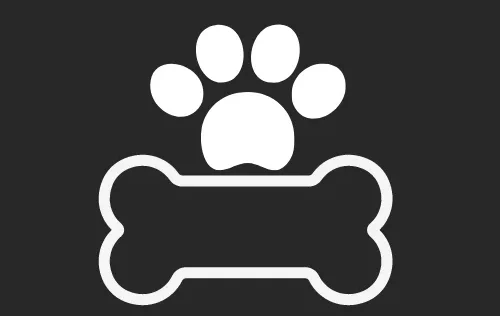How Muscular Should a Puppy Be? Understanding Puppy Development

When bringing a puppy into your home, one of the many considerations is their physical development, particularly muscle growth. Understanding how muscular a puppy should be is essential for ensuring their overall health and well-being. This guide provides insights into what a healthy muscle structure looks like in puppies, factors affecting their development, and tips for promoting proper growth.
What Is a Healthy Muscle Structure in Puppies?
Puppies go through various developmental stages, and their muscle structure will change as they grow. Generally, a healthy puppy should exhibit:
- Proportional Muscles: Puppies should have a balanced and proportional physique, avoiding any signs of being overly thin or excessively muscular.
- Visible Definition: While puppies will not have the same muscle definition as adult dogs, a healthy puppy may show some muscle tone, especially around the shoulders, back, and legs.
- Energy Levels: Healthy puppies typically have high energy levels, which contribute to their natural muscle development through play and exercise.
Factors Influencing Muscle Development in Puppies
Several factors can influence how muscular a puppy becomes:
1. Breed
Different dog breeds have varying growth patterns and muscular structures. For instance:
- Working Breeds: Breeds like German Shepherds and Labrador Retrievers may develop more muscle due to their genetic predisposition for strength and stamina.
- Toy Breeds: Smaller breeds, such as Chihuahuas or Pomeranians, will naturally have less muscle mass due to their size.

2. Nutrition
Proper nutrition is crucial for a puppy’s growth and muscle development. Key aspects to consider include:
- Quality Diet: Feeding your puppy a high-quality, balanced diet formulated for their age and breed is essential. Look for foods rich in protein, vitamins, and minerals.
- Portion Control: Ensure you’re providing the right amount of food based on your puppy’s weight and activity level. Overfeeding can lead to obesity, while underfeeding can stunt growth.
3. Exercise
Regular exercise is vital for developing a puppy’s muscles. Consider the following:
- Age-Appropriate Activities: Engage your puppy in age-appropriate exercises. For younger puppies, short play sessions are ideal, while older puppies can handle longer walks and more vigorous play.
- Socialization: Encourage your puppy to play with other dogs, as this not only aids in muscle development but also promotes social skills and confidence.
4. Health and Veterinary Care
Regular veterinary check-ups are crucial for monitoring your puppy’s health and development. Health issues can affect muscle growth, so it’s essential to:
- Stay Up-to-Date on Vaccinations: Keeping your puppy’s vaccinations current can prevent illnesses that may impact their development.
- Address Health Concerns Promptly: If you notice any signs of unusual weight loss, lethargy, or lack of appetite, consult your veterinarian.
Signs of Healthy Muscle Development in Puppies
It can be challenging to assess muscle development in puppies. Here are some signs to look for:
- Active Playfulness: A healthy puppy is generally playful and energetic, which contributes to natural muscle development.
- Strong Posture: Puppies should maintain a strong, upright posture when standing or walking, indicating good muscle strength.
- Healthy Weight: Ensure your puppy is within the recommended weight range for their breed and age. Consult your veterinarian for guidance.
How to Promote Healthy Muscle Development in Puppies
Here are some practical tips to encourage healthy muscle growth in your puppy:
1. Balanced Diet
- Choose Quality Food: Look for puppy food that lists meat as the first ingredient and is specifically formulated for their developmental needs.
- Monitor Feeding Portions: Follow the feeding guidelines on the dog food package and adjust based on your puppy’s activity level and growth rate.
2. Regular Exercise
- Establish a Routine: Create a consistent exercise schedule that includes playtime, walks, and mental stimulation.
- Use Toys and Games: Interactive toys, fetch, and tug-of-war can keep your puppy active and engaged while promoting muscle growth.
3. Vet Visits
- Schedule Regular Check-Ups: Routine veterinary visits will help monitor your puppy’s growth and overall health, ensuring they develop properly.
- Discuss Concerns: If you’re worried about your puppy’s muscle development, don’t hesitate to discuss it with your vet.
Conclusion
Understanding how muscular a puppy should be involves recognizing the balance between breed, nutrition, exercise, and overall health. By promoting healthy habits and providing proper care, you can help your puppy develop strong muscles and a healthy physique. Always consult your veterinarian for personalized advice and guidance tailored to your puppy’s unique needs.
Frequently Asked Questions (FAQs)
How can I tell if my puppy is too thin or too muscular?
A healthy puppy should have a slight waist when viewed from above and should not have prominent ribs. If you are concerned about their weight, consult your veterinarian.
What types of exercise are best for puppies?
Puppies benefit from short play sessions, walks, and socialization with other dogs. Activities should be age-appropriate and tailored to their breed.
Is it normal for my puppy to have growth spurts?
Yes, puppies often experience growth spurts, which can affect their muscle development. It’s essential to provide consistent nutrition and care during these phases.






